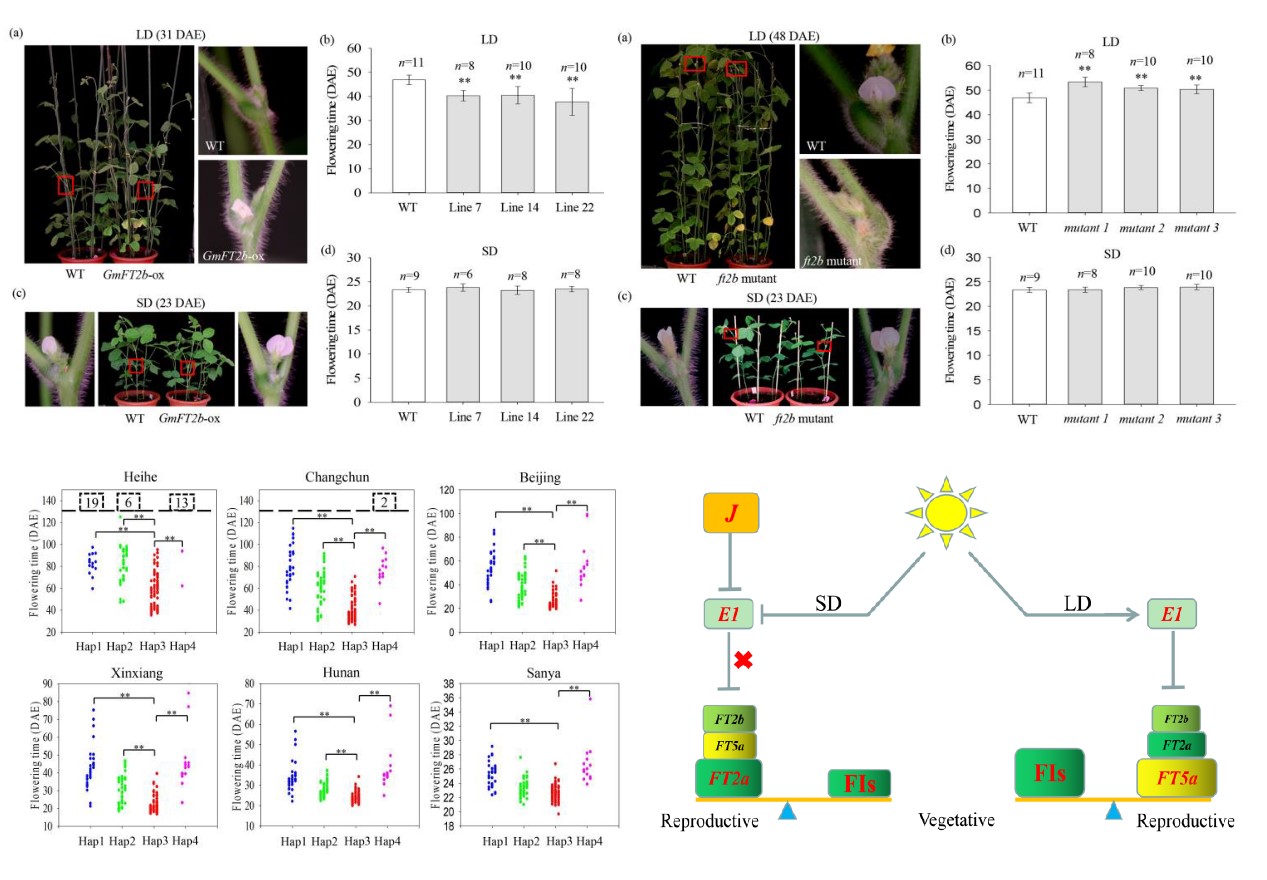Soybean adaption to high-latitude regions is associated with natural variations of GmFT2b, an ortholog of FLOWERING LOCUS T
作者:Li Chen#, Yupeng Cai#, Mengnan Qu#, Liwei Wang, Hongbo Sun, Bingjun Jiang, Tingting Wu, Luping Liu, Shi Sun, Cunxiang Wu, Weiwei Yao, Shan Yuan, Tianfu Han*, Wensheng Hou*
影响因子:5.624
刊物名称:Plant, Cell & Environment
出版年份:April 2020
doi: 10.1111/pce.13695
https://doi.org/10.1111/pce.13695
Abstract
Day length has an important influence on flowering and growth habit in many plant species. In crops such as soybean, photoperiod sensitivity determines the geographical range over which a given cultivar can grow and flower. The soybean genome contains ~10 genes homologous to FT , a central regulator of flowering from Arabidopsis thaliana . However, the precise roles of these soybean FTs are not clearly. Here we show that one such gene, GmFT2b , promotes flowering under long-days (LDs). Overexpression of GmFT2b upregulates expression of flowering-related genes which are important in regulating flowering time. We propose a “weight” model for soybean flowering under SD and LD conditions. Furthermore, we examine GmFT2b sequences in 195 soybean cultivars, as well as flowering phenotypes, geographical distributions, and maturity groups (MGs). We found that Hap3, a major GmFT2b haplotype, is associated with significantly earlier flowering at higher latitudes. We anticipate our assay to provide important resources for the genetic improvement of soybean, including new germplasm for soybean breeding, and also increase our understanding of functional diversity in the soybean FT gene family.

